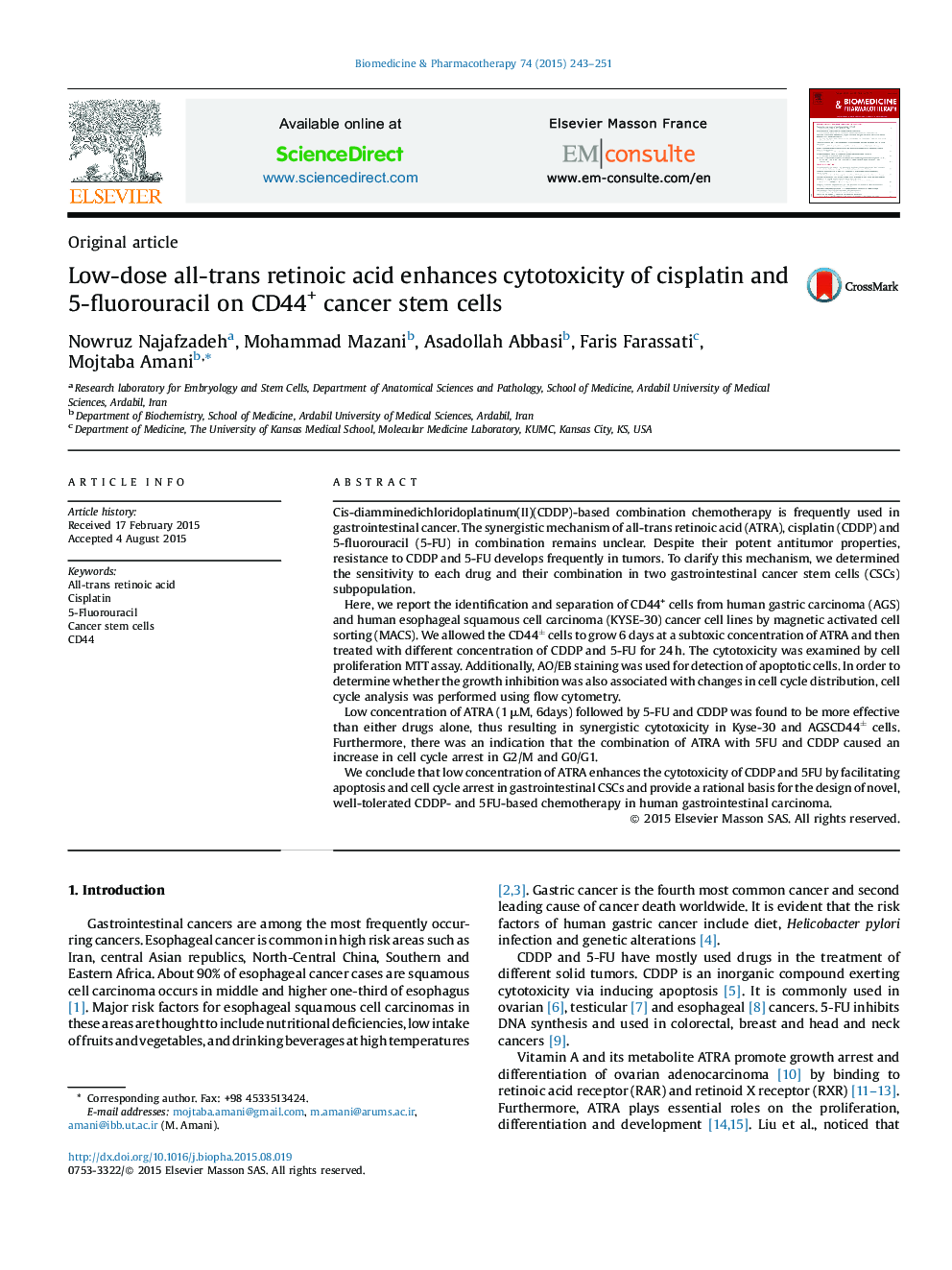| Article ID | Journal | Published Year | Pages | File Type |
|---|---|---|---|---|
| 2524970 | Biomedicine & Pharmacotherapy | 2015 | 9 Pages |
Cis-diamminedichloridoplatinum(II)(CDDP)-based combination chemotherapy is frequently used in gastrointestinal cancer. The synergistic mechanism of all-trans retinoic acid (ATRA), cisplatin (CDDP) and 5-fluorouracil (5-FU) in combination remains unclear. Despite their potent antitumor properties, resistance to CDDP and 5-FU develops frequently in tumors. To clarify this mechanism, we determined the sensitivity to each drug and their combination in two gastrointestinal cancer stem cells (CSCs) subpopulation.Here, we report the identification and separation of CD44+ cells from human gastric carcinoma (AGS) and human esophageal squamous cell carcinoma (KYSE-30) cancer cell lines by magnetic activated cell sorting (MACS). We allowed the CD44± cells to grow 6 days at a subtoxic concentration of ATRA and then treated with different concentration of CDDP and 5-FU for 24 h. The cytotoxicity was examined by cell proliferation MTT assay. Additionally, AO/EB staining was used for detection of apoptotic cells. In order to determine whether the growth inhibition was also associated with changes in cell cycle distribution, cell cycle analysis was performed using flow cytometry.Low concentration of ATRA (1 μM, 6days) followed by 5-FU and CDDP was found to be more effective than either drugs alone, thus resulting in synergistic cytotoxicity in Kyse-30 and AGSCD44± cells. Furthermore, there was an indication that the combination of ATRA with 5FU and CDDP caused an increase in cell cycle arrest in G2/M and G0/G1.We conclude that low concentration of ATRA enhances the cytotoxicity of CDDP and 5FU by facilitating apoptosis and cell cycle arrest in gastrointestinal CSCs and provide a rational basis for the design of novel, well-tolerated CDDP- and 5FU-based chemotherapy in human gastrointestinal carcinoma.
